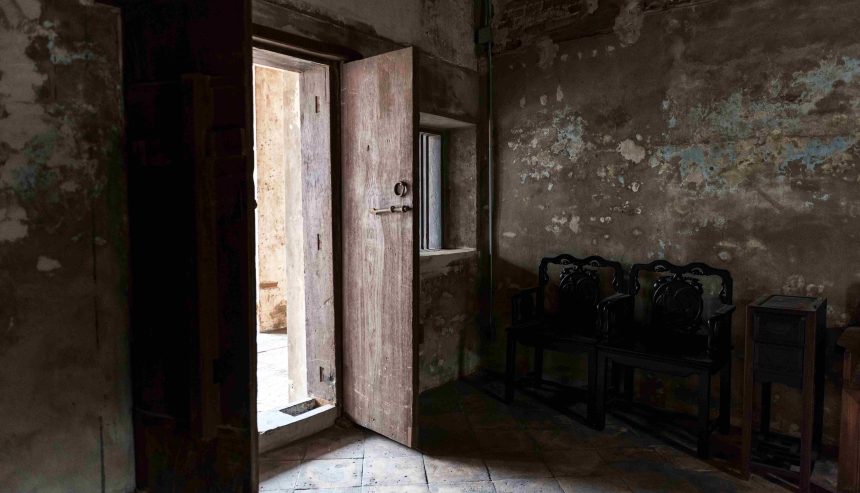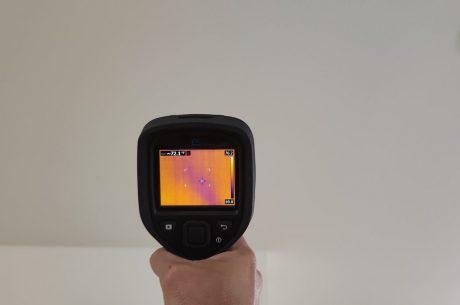Mold is an ever-growing and evolving problem in many homes across the world. Its presence not only jeopardizes the structural integrity of our living spaces but also poses potential health risks. Therefore, as homeowners and tenants, it is crucial to understand the timeline of mold formation to combat this persistent intruder effectively.
In this article, you’ll discover everything about the world of mold growth, exploring the factors contributing to its development and uncovering the mysteries behind its formation time. By gaining a deeper understanding, we can equip ourselves with the knowledge to prevent and address mold-related issues proactively. So let’s dive in and answer the problem: How long does it take for molds to form?
What Is Mold?
Mold is a form of fungal growth that arises from spores. Mold can be encountered outdoors and indoors, and it thrives in moist environments with temperatures between 40-100 degrees Fahrenheit. There are many types of mold, including Aspergillus, Cladosporium, Penicillium, Alternaria, Fusarium, Stachybotrys chartarum (also known as black mold), Aureobasidium, Chaetomium, and Trichoderma.
Exposure to these various forms of mold can lead to numerous health implications, such as allergies, asthma exacerbations, and other respiratory issues. Symptoms may include sneezing; congestion; runny nose; coughing; sore throat; headaches; irritation of the eyes, skin, or mucous membranes; fatigue; memory loss, and difficulty concentrating. In some cases, they may even bring about death if left untreated.
It’s important to understand mold’s effects on our environment and how we are involved with it so we can take steps toward limiting our exposure to it when necessary. The following section will discuss factors affecting mold growth so you can better identify potential sources of contamination in your home or workplace.
Factors Affecting Mold Growth
To effectively prevent and address mold issues, it is crucial to comprehend the factors that contribute to its growth. Here are the key elements:
- Humidity Levels: High relative humidity levels above 70% create a favorable environment for mold growth. Moisture is essential for mold to thrive, so controlling humidity prevents mold infestation.
- Temperature Fluctuations: Mold can grow within a wide temperature range, typically between 40 and 100 °F (4 and 38 °C). Fluctuating temperatures provide favorable conditions for most common types of mold to reproduce and spread.
- Ventilation and Airflow: Poor ventilation or restricted airflow can lead to moisture buildup. Stagnant air allows moisture to accumulate, creating a damp environment that supports mold growth. Adequate ventilation and airflow help to prevent mold by keeping the air dry and reducing moisture levels.
- Moisture Control: Effective moisture control is crucial in preventing mold growth. Water-damaged materials should be promptly addressed and removed to avoid contamination and mold colonization. In addition, addressing leaks, condensation, and other sources of excess moisture is essential in preventing mold infestation.
- Water Damage: Significant water damage from floods, leaks, or other sources can result in high concentrations of mold spores. In such cases, professional assistance may be necessary to remediate the affected areas and remove mold contamination properly.
By understanding these factors and proactively managing them, you can significantly minimize the risk of mold growth in your home or office. Regular inspection, maintenance, and prompt action in response to moisture issues are crucial in preventing mold infestations and maintaining a healthy indoor environment.
Signs of Mold Growth
Mold can indeed be identified by a variety of visual and olfactory indications. To summarize and expand on the typical indications, here are the common signs of mold growth:
- Discoloration: Mold growth often results in visible stains or patches on surfaces. It can appear in various colors, including black, green, brown, or white.
- Musty Odors: Mold emits a distinctive musty or earthy smell. If you detect a persistent, unpleasant odor in your home, it may indicate hidden mold growth.
- Visible Growth: Mold can have a fuzzy or powdery texture and may be found on walls, ceilings, floors, or other surfaces that are damp or prone to moisture.
- Surface Condensation: Excessive moisture in the air can lead to condensation on windows, mirrors, or cold surfaces. This condensation can create a favorable environment for mold growth.
- Dark Spots: Discoloration or dark spots on walls, ceilings, or corners may be signs of mold growth. These areas are often damp or have experienced water damage.
- Peeling Paint and Wallpaper: Mold can cause paint or wallpaper to bubble, crack, or peel. If you notice these signs and a musty smell, it may indicate mold behind the surface.
- Airborne Spores: In some cases, mold growth can release spores into the air. If you see floating particles or experience increased respiratory issues in certain areas of your home, it could suggest an active mold infestation.
Remember, mold can grow in hidden or inaccessible areas, such as inside walls or under carpets. If you suspect mold growth but cannot locate the source, it’s advisable to consult a professional mold remediation specialist for a thorough assessment.
Prevention Tips

Mold growth is a serious concern in many homes and workplaces. Fortunately, there are several precautions you can adopt to prevent mold from forming. Here are a number of techniques on how to minimize the risk of mold:
- Keep humidity levels low by using dehumidifiers or air conditioning units;
- Clean up any spills quickly, as standing water will accelerate mold growth;
- Repair any plumbing leaks that could be causing excessive moisture;
- Ensure proper ventilation throughout your home or office.
Following these simple guidelines can dramatically reduce the chances of experiencing a mold infestation. Additionally, regular inspections can help catch potential problems before they become significant. Taking proactive measures like replacing carpets with hardwood floors and regularly checking for signs of dampness or water damage is also essential to preventing mold growth.
Remediation Strategies
Mold growth can initiate in as little as 24 hours, so acting quickly once the mold is found is essential. In order to remediate the problem, here are several strategies that should be employed:
– Moisture Control
Determine and address the source of moisture that is promoting mold growth. It could involve fixing leaks, improving ventilation, reducing humidity, or drying wet areas promptly.
– Air Purification
Use air purifiers equipped with HEPA filters to remove mold spores from the air. It helps improve air quality and reduce the risk of inhalation or further contamination.
– Cleaning Methods
Scrub surfaces with a bleach solution (1 part bleach to 10 parts water) or a specialized mold cleaner to eliminate existing mold colonies. Thoroughly clean affected areas and ensure proper disposal of contaminated materials.
– Ozone Generators
Ozone generators can be used to remove mold and odors from the air. However, caution must be exercised as ozone can harm humans and pets. Ensure proper utilization and follow safety guidelines.
– Sealing Cracks and Crevices
Seal any openings or areas where mold growth is observed. It helps prevent the entry of airborne mold spores and limits moisture accumulation in hidden places.
Combining these strategies increases the effectiveness of mold remediation and reduces the likelihood of future outbreaks. Remember to address the underlying moisture issue to prevent mold from returning.
Health Risks Associated With Exposure
Mold can form within 24-48 hours, with the right conditions. Exposure to mold and fungal growths has been linked to several health risks, including respiratory problems such as coughing, sneezing, and wheezing. Asthma symptoms may also worsen due to exposure. Allergic reactions are prevalent, too; people may experience itchy eyes, skin irritation, and throat irritation when exposed to molds.
The extent of these health risks depends on how much a person is exposed to mold and their individual susceptibility. Those who already face allergies or asthma may be more likely to develop further complications if exposed for an extended time. Therefore, it’s essential that all potential sources of indoor air pollution, like mold growths, are identified and removed quickly so that any potential health risks are minimized.
The best way to alleviate health issues associated with airborne mold spores is by reducing moisture indoors and controlling humidity levels using dehumidifiers or other methods. Additionally, regular cleaning of surfaces affected by mold should help protect against adverse health effects caused by inhalation or direct contact with the fungi.
Final Thoughts
Mold growth can be a serious problem, and taking the necessary steps to prevent and remediate mold when it does occur is essential. Taking proactive measures such as proper ventilation, controlling humidity levels, and keeping surfaces clean is vital in preventing mold from forming.
It’s also critical to understand the health risks associated with mold exposure and fungi, significantly if prolonged or frequent exposure exists. Symptoms can range from mild irritation of the eyes and skin to more severe respiratory signs like asthma. So the answer to the problem of how long does it take for molds to form is that mold can form in just 24-48 hours, with the right conditions.
If you find signs of mold growth, contact PuroClean Pembroke Pines for professional mold remediation services. Don’t wait, take action now to protect your home and the health of your family.



